This post may contain affiliate links. Please read my disclosure and privacy policy.
This Almond Milk recipe is an easy dairy-free alternative that tastes even better than the store-bought variety. All you need is 2 ingredients to get started!

Why You’ll Love It
It tastes amazing. Homemade almond milk tastes far superior when compared to store-bought almond milk, so be warned– you may never want to buy the prepared version again.
It’s easy to make. Just blend almonds and water together in a blender, then strain out the pulp. The entire process can be done in just 5 minutes, minus the time it takes to soak the almonds. (Soaking is optional, though!)
It’s made without preservatives or thickeners. Store-bought milks need to rely on preservatives for a long shelf life, and often add gums and thickeners to make the milk have a uniform consistency. When you make almond milk at home, you can skip those added ingredients.
It’s easy to customize. You can easily add extra flavor to this almond milk recipe, like vanilla or chocolate, depending on your preference. Check out my Vanilla Almond Milk and Chocolate Almond Milk variations, if you want extra guidance.
It’s gluten-free & dairy-free. For those who can’t tolerate cow’s milk, almond milk is an easy lactose-free option. You can use it in smoothies, soups, sauces, cereal, and more!
You can use the pulp, too. Not only will you have delicious almond milk to drink, but you can also use the leftover pulp to make Almond Pulp Hummus or Almond Pulp Brownies.
Ingredients You’ll Need
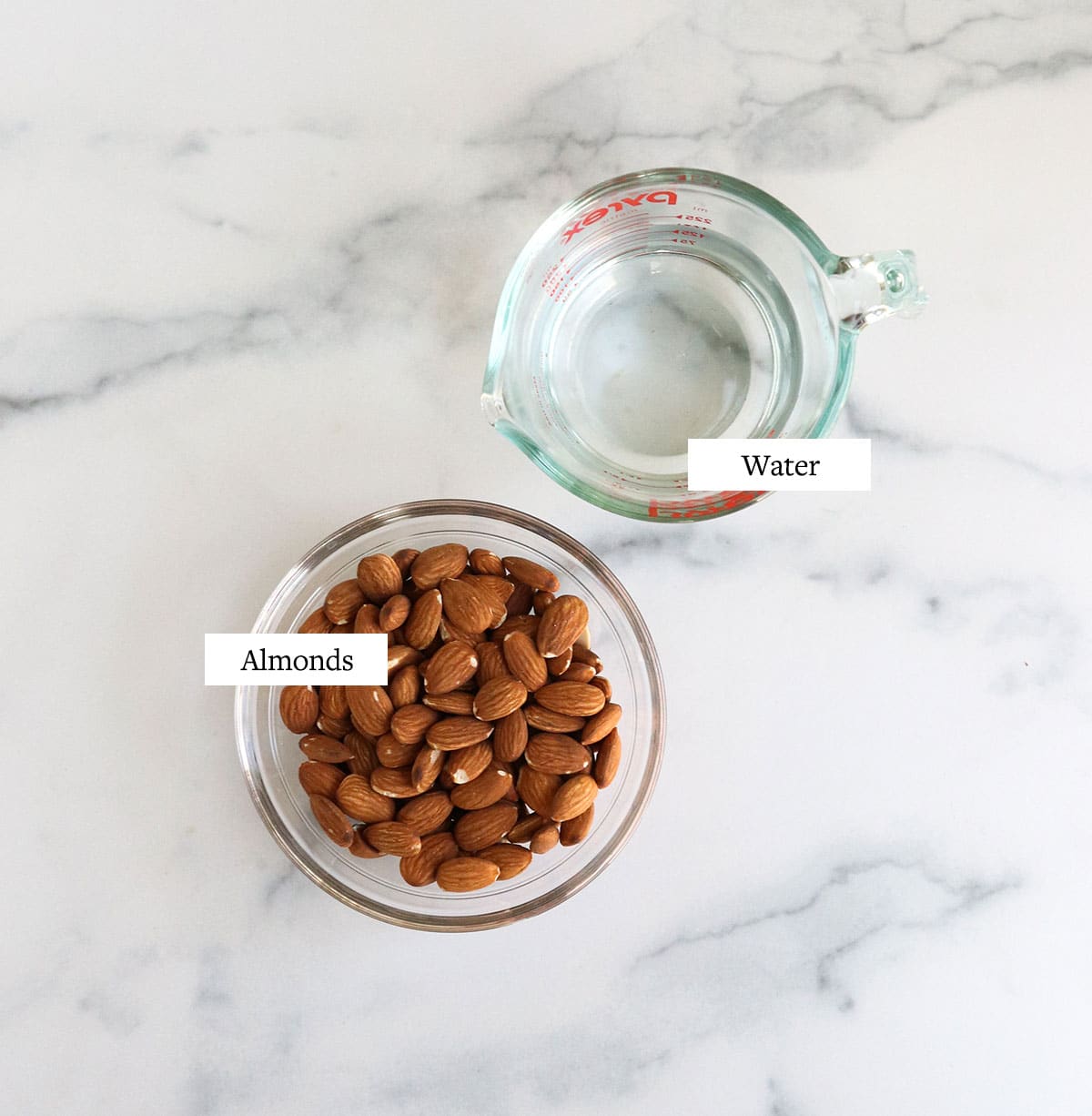
The only two ingredients you need to make almond milk are almonds and water. I tend to use almonds that are not roasted or salted, so the almond milk will have a neutral, mild flavor. However, roasted nuts will work, too!
If you want to make a flavored almond milk, you can also add in vanilla extract and a splash of maple syrup, for sweetness.
How to Make Almond Milk
1. Soak the almonds.
Research doesn’t necessarily support the idea that soaking nuts improves digestion or reduces anti-nutrients, but soaking almonds ahead of time can make them softer and help them break down in your blender easier.
If you want to take the time to do this step, cover the almonds with at least 2 inches of water, so they have room to expand as they soak. (I usually use 2 cups of water to cover 1 cup of almonds.) Let them soak for up to 8 hours, then drain away the soaking water by pouring the almonds into a fine mesh strainer.
You can skip this step if you already have a high-speed blender that can break down almonds effortlessly, or if you’re simply short on time!
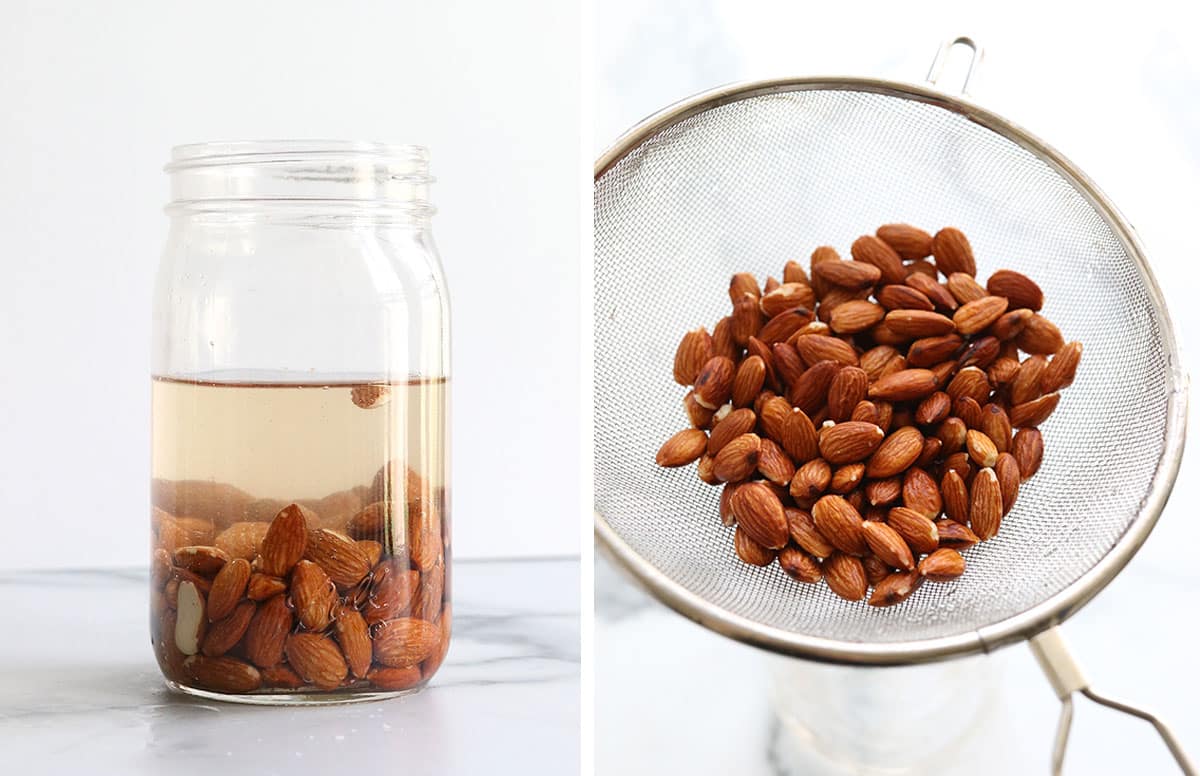
2. Blend.
Add the almonds into a high-speed blender, along with 4 cups of fresh water. Secure the blender’s lid and blend until the almonds are totally broken down and the mixture looks creamy, about 60 to 90 seconds.
There should be almost no visible almond pieces when it’s done blending.

3. Strain.
Arrange a nut milk bag or cheesecloth over a large bowl, then pour the blended almond mixture into the bag. Carefully squeeze the bag, removing as much liquid from the almond pulp as possible.
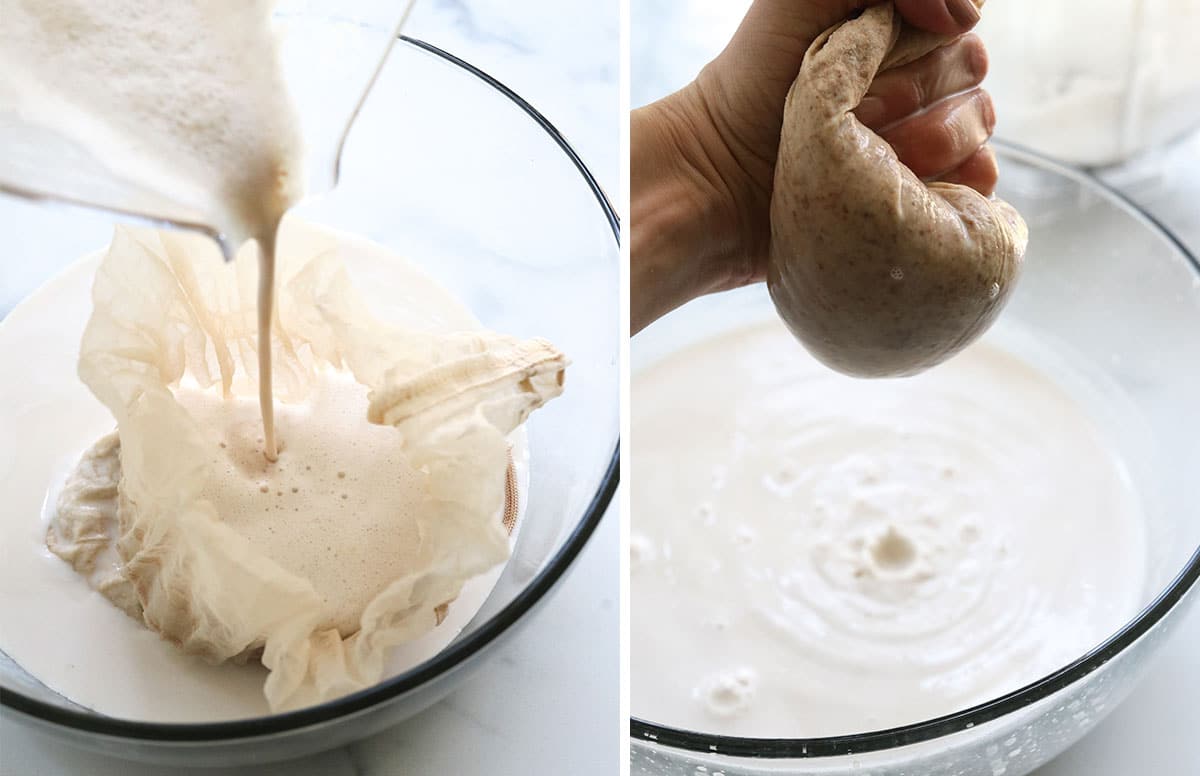
4. Enjoy!
You can use the almond milk right away, or add any extra flavorings to taste, such as vanilla, maple syrup, or a pinch of sea salt. Transfer the almond milk to an airtight container and store it in the fridge for up to 5 days. Or you can freeze it for up to 3 months.
Because this recipe doesn’t call for any preservatives, it won’t last as long as store-bought milks do. (You’ll be able to tell it’s gone off when the smell or flavor goes sour.) Be sure to make only what you’ll drink in a week, or plan on freezing the leftovers. You can easily scale the recipe as needed!
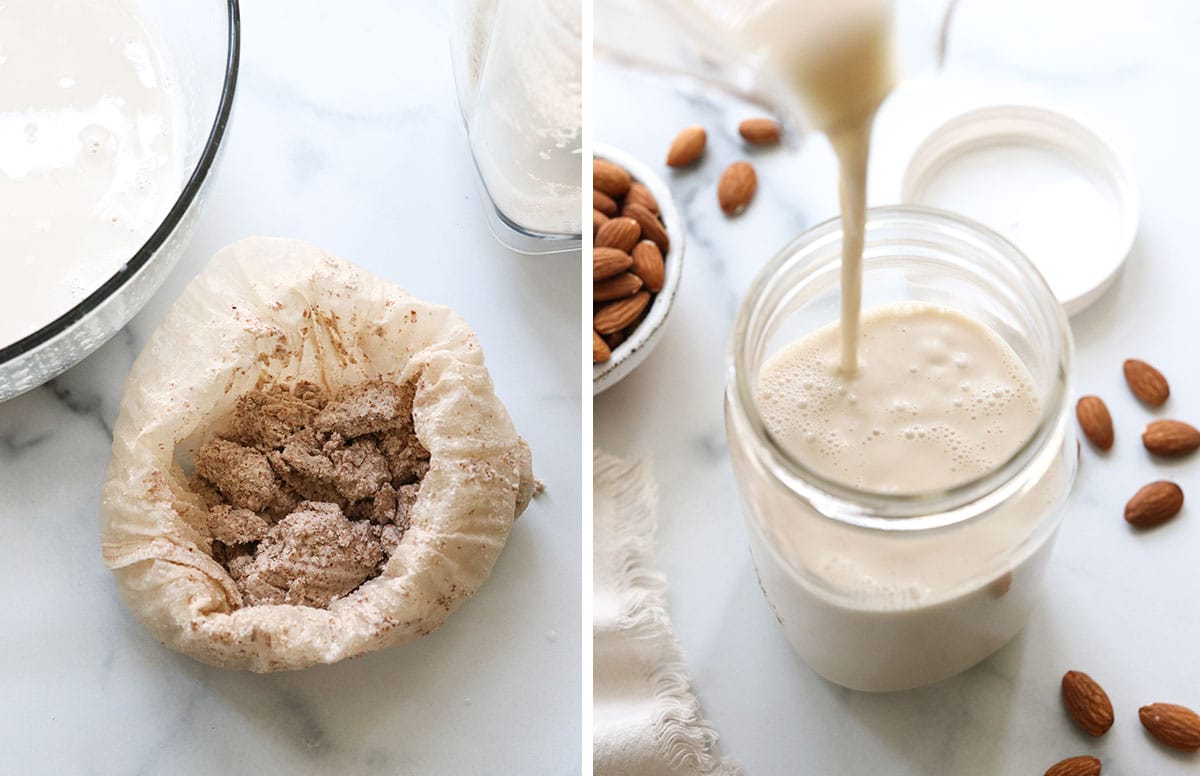
Frequently Asked Questions
Almonds contain important vitamins and minerals, like vitamin E and magnesium. Magnesium is involved in many processes in the body, including blood sugar control, so drinking almond milk may help you reach some of your nutrient needs. It’s also helpful if you are dealing with lactose intolerance, and need a dairy-free alternative.
Straining the almond milk is significantly more difficult when you add cocoa powder into the mix, so it’s best to strain the almond pulp before adding flavoring. This also keeps the almond pulp neutral-flavored, so you can use it in other recipes later (like hummus, which would not work with sweet almond pulp).
You can use the wet almond pulp immediately to make a batch of almond pulp hummus, or you can dry the almond pulp in a dehydrator or low-heat oven and save it to use a flour alternative. It’s not quite the same as almond meal, because some of the fat content has been removed, but it can also work similarly to oat flour in recipes.
Try using it in chia pudding, or over granola, or stirred into your morning oatmeal. It’s also can be frothed to make a foam for lattes, or use it in a chai latte or healthy hot chocolate.
Looking for more dairy-free milk ideas? You can make homemade oat milk for an affordable option, or try hemp milk for extra plant-based protein.
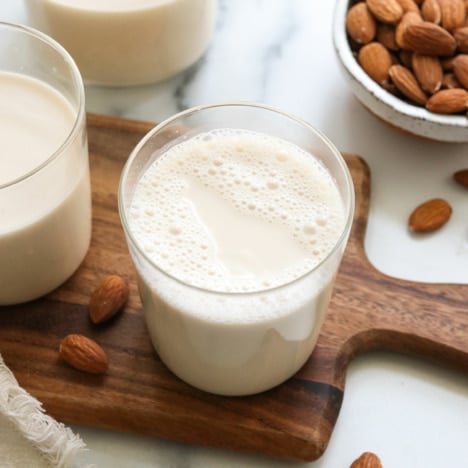
Ingredients
- 1 cup almonds
- 4 cups filtered water
Instructions
- To soak the almonds before blending, cover them with 2 cups of water in a large bowl or jar, and let them soak for 4 to 6 hours. This step is optional, but may help with blending later if you don't have a powerful blender. Drain the almonds through a fine mesh strainer before moving on to the next step.
- Add the almonds and 4 cups of fresh water to a blender. Secure the lid and blend on high-speed for at least 60 seconds, until no pieces of almonds are visible and the mixture looks creamy.
- Pour the almond milk through a nut-milk bag or cheese cloth, squeezing well to extract the milk. You can save the remaining almond pulp for another recipe (see the full post for ideas) or discard. If you would like to flavor the almond milk with vanilla or chocolate flavorings, this is the time to whisk in any additions.
- Store the almond milk in an airtight container in the fridge for up to 4 days. (You can freeze leftovers, if needed, for up to 3 months, too!)
Video
Notes
Nutrition
If you try this almond milk recipe, please leave a comment and star rating below letting me know how you like it!
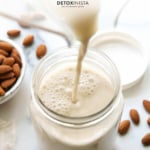

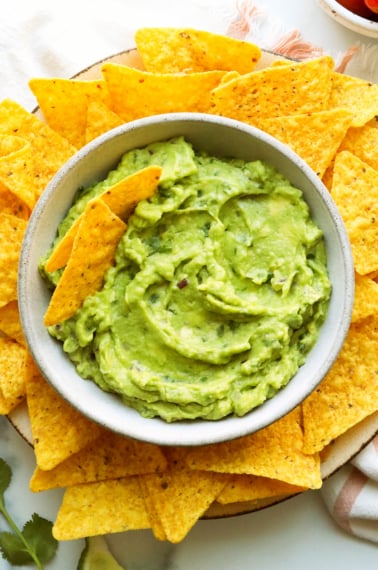
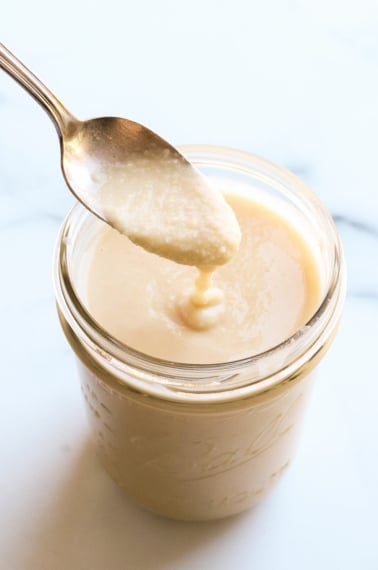
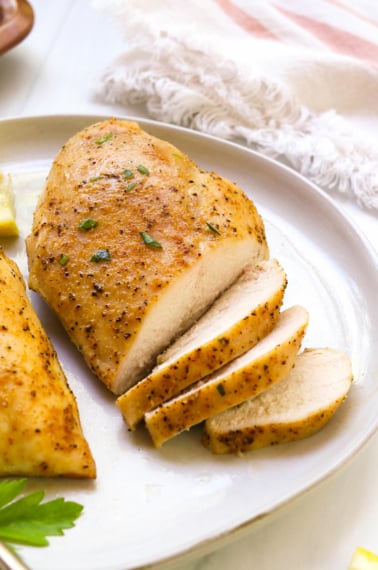







I love this recipe but have a question about the skins. I have read that almond skins contain toxins. What is you opinion about removing the skins vs leaving them on? I am using high quality almonds.
My daughter just told me about your website. I am so happy to have found your recipes. I have been diagnosed with breast cancer and you will help me on my healing journey and lifestyle change. Thank You and Merry Christmas
I’ll have to admit that store bought almond milk is so flat and watery as far as taste. Does the coconut oil/vanilla/maple syrup create a richer almond milk here or is it specifically sweet? I’d like a thick, creamy, full-bodied one for cereal and to have with cookies (have been enjoying local, raw, grass-fed cow’s milk lately and love it’s thick creaminess and natural ‘sweetness’ but do not usually do dairy). I’d really like to duplicate the taste and texture of the raw milk with this homemade almond milk so am wondering what version you would recommend making- the one adding coconut oil/vanilla/maple syrup or the one featuring almonds/water alone?
The trick to preventing slimy Oatmilk is to not squeeze it in the nut bag! I tilt the bag around to get all the liquid out and I may gently squeeze the contents but never like squeezing a sponge.
I find very useful, I never did, I’m going to make my own almond milk.
Thank you
I wanted to try your cracker recipe using the leftover pulp, but although I used the one cup of almonds and the four cups of water you called for, I processed it differently than you do,and I was left with only about two tablespoons of almond paste, and just over 4.5 cups of milk. I thought about putting it in the freezer so I could keep adding to it until I got a cup, but it was so wonderfully creamy, I ended up just adding a smidge of honey and cinnamon and eating it right away. I am not a very good cook, but I do make a lot of applejuice in my Vitamix, and when I first started out I experimented with different techniques to maximize the amount of juice I could harvest from the apples. (I don’t have a juicer, plus I like my apple juice quite dilute, and add a whole lime, skin and all, to my recipe. Total lime addict, so it tastes like a really nice limeade, which is perfect for me.) Anyway, applying my applejuicing experience to my almond juicing attempt seemed like a good idea. Here is what I did: I soaked the almonds overnight in water. The next day I discarded the water and put the one cup of almonds into my vitamix with one cup of water. I let that process a very generous length of time, at a high speed. I don’t have a clock in my kitchen, so I don’t know how long it was. I just touched the bottom of the blender vessel every once in a while. When it felt a bit warm, I stopped. I used a strainer, not a bag, to strain out the liquid, pressing down lightly with a spoon. Then I returned the pulp, which was super creamy, no bits of anything in it, to the blender. I added the remaining three cups of water, washing it down the sides of the blender. I processed this for at most a couple of minutes, then strained it again. So, I guess a win in that I got a bit more milk, but I lost out on the almond paste, which I had really been looking forward to using. After the crackers, I was going to try almond lace cookies with dried, reground paste. But I get so little almond paste will it ever be worth my time? Nuts! I think I will go drown my sorrow in some hot chocolate made with my fresh almond milk. Hmmm. Just had an idea. Since the almond paste was so dreamy creamy, I might save some up and try to make truffles with it, substituting it for some of the whipped cream. A slightly healthier truffle, and I do love truffles!
Hi. First time trying this. Can I substitute honey for the sweetener?
Yes, that should be just fine! Hope you enjoy it.
Excellent recipe – and thank you for sharing. I add a tablespoon of soy lecithin granules to act as an emulisfier and reduce seperation of the milk when used for hot coffee or tea. We have been on this now for about 6 months and love it. We also dry the left over almond pulp (in a dehydrater) and then blend it for almond flour. That keeps for weeks in the pantry. Its very inexpensive and easy for milk and then the bonus flour has us drinking and eating higher protein. The almond flour is great for making schnitzle crumb and amoretti biscuits as well as your suggested recipes. Also appreciate that you left on the skins – they are apparently rich in fibre and polyphenol antioxidants.
I know you need ads to make $$$ but I wish you’d adjust the setup here. You’re recipe & instructions are interrupted by ads every few lines. I wanted to print the page or even screenshot it but I won’t because it’s too busy & convoluted. It’s also a deterrent from coming back to this site for anything else in the future. If the ads on your page detract so much from the content that it’s unusable, it really defeats the entire point.
Sorry to hear you had a poor user experience, KJ. If you use the “jump to recipe” button at the top, it will take you straight to the recipe card where there is a “print” button– you can screen shot that page, or print it with zero ads. Hope that helps!
4/5/2022
Can you make pudding or custards with Almond Milk???
Would certainly like to know.